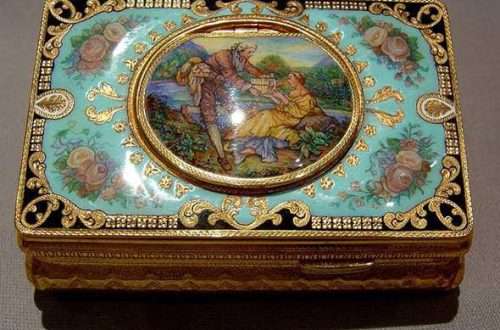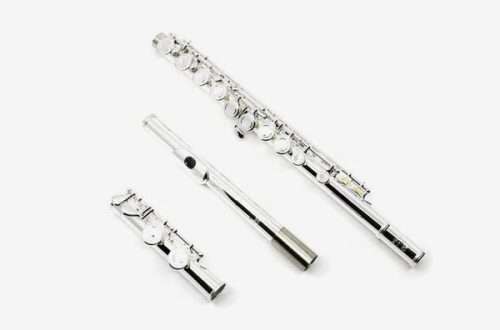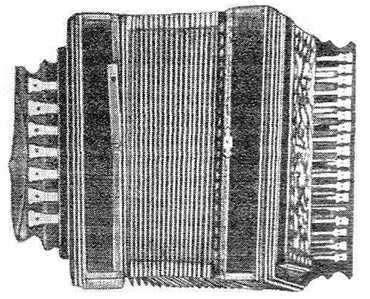
History of the accordion
In a large and friendly family of musical instruments, each has its own history, its own unique sound, its own characteristics. About one of them – an instrument with a refined and euphonious name – accordion, and will be discussed.
The accordion has absorbed the properties of various musical instruments. In appearance, it resembles a button accordion, in design it resembles an accordion, and with the keys and the ability to switch the register, it is similar to a piano.  The history of this musical instrument is amazing, tortuous and still causes lively discussions in the professional environment.
The history of this musical instrument is amazing, tortuous and still causes lively discussions in the professional environment.
The history of the accordion dates back to the Ancient East, where the principle of reed sound production was used for the first time in the sheng musical instrument. Two talented masters stood at the origins of the creation of the accordion in its usual form: the German watchmaker Christian Buschman and the Czech craftsman Frantisek Kirchner. It is worth noting that they did not know each other and worked completely independently of each other.
17-year-old Christian Bushman, in an effort to simplify the work of tuning the organ, invented a simple device – a tuning fork in the form of a small box in which he placed a metal tongue. When Bushman breathed air into this box with his mouth, the tongue began to sound, giving out a tone of a certain pitch. Later, Christian added an air reservoir (fur) to the design, and so that the tongues did not vibrate at the same time, he supplied them with valves. Now, in order to get the desired tone, it was necessary to open the valve over a certain plate, and leave the rest covered. Thus, in 1821, Bushman invented the prototype of the harmonica, which he called “aura”.
Almost at the same time, in the 1770s, the Czech organ maker Frantisek Kirchner, who worked at the Russian royal court, came up with a new system of reed bars and used it as the basis for creating a hand harmonica. It had little in common with a modern instrument, but the main principle of harmonica sound production remained the same – vibrations of a metal plate under the influence of an air stream, pressing and tweaking.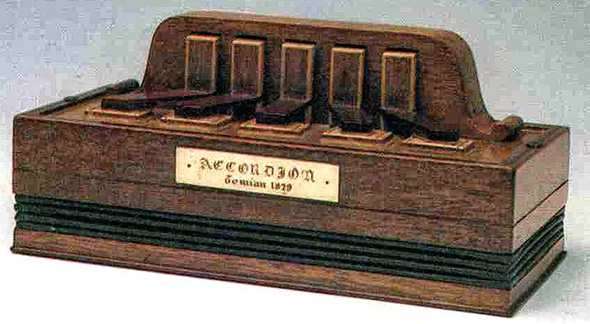 Some time later, the hand harmonica ended up in the hands of the Viennese organ master Cyril Demian. He worked hard to improve the tool, giving it, in the end, a completely different look. Demian divided the body of the instrument into two equal parts, placed keyboards for the left and right hands on them and connected the halves with bellows. Each key corresponded to a chord, which predetermined its name “accordion”. Cyril Demian officially introduced the author’s name of his instrument on May 6, 1829. After 17 days, Demian received a patent for his invention and since then May 23 is considered the birthday of the accordion. In the same year, mass production and sale of a newly made musical instrument began.
Some time later, the hand harmonica ended up in the hands of the Viennese organ master Cyril Demian. He worked hard to improve the tool, giving it, in the end, a completely different look. Demian divided the body of the instrument into two equal parts, placed keyboards for the left and right hands on them and connected the halves with bellows. Each key corresponded to a chord, which predetermined its name “accordion”. Cyril Demian officially introduced the author’s name of his instrument on May 6, 1829. After 17 days, Demian received a patent for his invention and since then May 23 is considered the birthday of the accordion. In the same year, mass production and sale of a newly made musical instrument began.
The history of the accordion continued on the shores of the Adriatic – in Italy. There, in a place near Castelfidardo, the son of a farmhand, Paulo Soprani, purchased Demian’s accordion from a wandering monk. 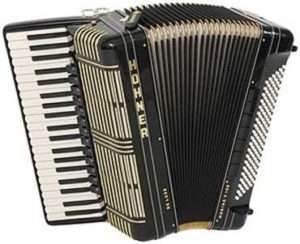 In 1864, having gathered local carpenters, he opened a workshop, and later a factory, where he was engaged not only in the production of tools, but also in their modernization. Thus the accordion industry was born. The accordion quickly won the love of not only Italians, but also residents of other European countries.
In 1864, having gathered local carpenters, he opened a workshop, and later a factory, where he was engaged not only in the production of tools, but also in their modernization. Thus the accordion industry was born. The accordion quickly won the love of not only Italians, but also residents of other European countries.
At the end of the 40th century, the accordion, along with emigrants, crossed the Atlantic and firmly settled on the North American continent, where at first it was called the “piano on the straps.” In the XNUMXs, the first electronic accordions were constructed in the USA.
To date, the accordion is a popularly beloved musical instrument that can voice any human feeling from hopeless longing to jubilant joy. Despite this, he still continues to improve.




